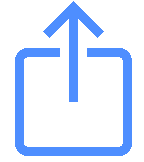Venturing into the fascinating world of camel markets near the UAE offers a truly unique cultural immersion, allowing you to witness a centuries-old tradition that remains vibrantly alive in the heart of the desert. This experience is far more than just seeing camels; it’s about understanding the intricate role these majestic animals play in the region’s heritage and economy. Prepare yourself for a sensory overload, where the sights, sounds, and even smells of these bustling hubs create an unforgettable tapestry of Emirati life.
The Enduring Allure of Camel Markets
Camel markets, or souqs, are deeply ingrained in the fabric of Arabian culture, serving not only as trading posts but also as social gathering places where Bedouin traditions are preserved. They are living museums, showcasing the historical significance of camels as beasts of burden, sources of milk and meat, and symbols of wealth and prestige. In modern times, their role has expanded to include camel racing and beauty pageants, elevating these animals to superstar status. You will witness firsthand the pride and meticulous care showered upon these magnificent creatures.
Prime Camel Market Destinations in the UAE and Beyond
While the UAE itself hosts some notable camel markets, particularly in Abu Dhabi and Al Ain, venturing slightly further afield into neighboring Oman can offer an even more authentic and less commercialized experience. In the UAE, the Al Ain Camel Market stands out as a prominent and easily accessible option. Located in the emirate of Abu Dhabi, Al Ain is often referred to as the Garden City due to its lush oases and is a fantastic base for exploring the rich cultural heritage of the region. This market, vibrant and bustling, is a great place to observe daily dealings.
However, for a truly immersive journey, consider the Nizwa Camel Market in Oman. Nizwa, a historic city famed for its ancient fort and traditional souqs, holds a lively Friday morning camel market that is legendary. It is an experience that transports you back in time, offering a raw and unfiltered glimpse into traditional Omani life. The drive to Nizwa from Dubai or Abu Dhabi is picturesque, taking you through stunning desert landscapes and rugged mountains. Keep in mind that border crossings require specific documentation, so it’s wise to research the latest visa and car insurance requirements for Oman well in advance.
Navigating the Bustle of a Camel Market
Visiting a camel market requires a bit of planning and an open mind. These are not tourist traps but active trading centers, so respect for local customs is paramount. Arrive early, especially if you’re visiting the Nizwa Camel Market, as the peak activity usually occurs in the morning hours. Dress modestly, covering your shoulders and knees, as a sign of respect for the local culture. It’s also advisable to wear comfortable shoes, as you’ll likely be doing a fair amount of walking on uneven terrain.
Be prepared for a vibrant and sometimes chaotic atmosphere. The air is often filled with the sounds of bleating camels, the chatter of merchants, and the occasional roar of a powerful engine from a pickup truck laden with livestock. Don’t be shy to observe and take it all in. If you plan to take photographs, it’s always courteous to ask for permission, especially before snapping close-ups of people. Engaging with the vendors, even with simple gestures or a few Arabic phrases, can enrich your visit immensely.
Decoding Camel Market Etiquette and Bargaining
Understanding the unspoken rules of a camel market can enhance your experience significantly. While tourists are welcome, remember you are entering a working environment. Do not touch or disturb the camels unless invited to do so by their owners. Observe how sellers and buyers interact; it’s often a theatrical display of negotiation. The art of bargaining is deeply ingrained in these markets. While you may not be buying a camel, you might be tempted by other local goods on offer, such as dates, spices, or traditional crafts. If you do engage in bargaining, do so respectfully and with a smile. It’s a dance, not a battle.
Prices for camels vary wildly based on age, breed, health, and pedigree, especially for racing camels. While we won’t state specific prices, be assured that prize-winning racing camels can fetch sums that would make your head spin, often reaching into the millions of Dirhams or Omani Rials. These aren’t your average farm animals; they are elite athletes. For everyday purposes, camels might cost significantly less, but still represent a substantial investment.
Cultural Insights and Local Flavors
Beyond the commerce, camel markets offer a unique window into the cultural tapestry of the Arabian Peninsula. You’ll observe local men in their crisp kanduras and women in their elegant abayas, all partaking in this age-old tradition. It’s a place where old meets new, where modern vehicles transport ancient traditions. Don’t be surprised to see vendors offering traditional Emirati or Omani coffee, known as gahwa, a symbol of hospitality. Accepting a small cup is a gesture of goodwill and a wonderful way to connect with the locals.
You might also encounter traditional Bedouin snacks or ingredients. While a full meal isn’t usually the focus of these markets, you can often find local produce or even camel milk, which is gaining popularity for its health benefits. It’s a fantastic opportunity to sample authentic flavors and learn about the local diet. Remember, these markets operate on local time and customs, so patience and respect are key.

Transportation and Logistics
Reaching these camel markets typically requires a car. While public transport options exist for some areas within the UAE, reaching the more traditional markets like the Al Ain Camel Market or venturing to Nizwa will be far more convenient with a private vehicle. Car rental agencies are readily available throughout Dubai and Abu Dhabi. Ensure your rental agreement allows for cross-border travel if you plan to visit Oman. Check road conditions and plan your route in advance using reliable navigation apps. The roads in the UAE and Oman are generally excellent, but specific routes to remote markets might involve some unpaved sections. Always keep a full tank of fuel, especially when heading into more isolated areas.
Best Times to Visit and What to Expect
The best time to visit camel markets is during the cooler months, from October to April, when the weather is more agreeable for outdoor activities. Mornings are almost always the busiest and most vibrant periods, so aim to arrive as early as possible to catch the full spectacle. During the holy month of Ramadan, market hours might be shorter or altered, so it’s always a good idea to check opening times beforehand.
Expect to spend anywhere from an hour to a few hours, depending on your level of interest. You can wander freely, watch the negotiations, and soak in the atmosphere. Some markets might have designated areas for tourists, but generally, you’re free to explore. Be mindful of your belongings in crowded areas.
Connecting with Local Life
One of the most rewarding aspects of visiting a camel market is the chance to connect with local life. These markets are not staged for tourists; they are an integral part of the local economy and social fabric. You’ll see genuine interactions and a way of life that has persisted for centuries. It’s a chance to step outside the gleaming modernity of Dubai and Abu Dhabi and experience a different facet of the UAE’s rich heritage.
The www.few.ae team recommends these markets as an unparalleled cultural experience. We believe that truly understanding a region involves delving into its historical roots and everyday life, and camel markets offer just that. They are a powerful reminder of the enduring bond between people and animals in this desert land.
Preserving a Legacy
Camel markets are more than just places of trade; they are custodians of a living legacy. They represent the deep respect and appreciation the people of the UAE and Oman have for these desert ships. By visiting these markets responsibly, you contribute to the preservation of these unique cultural traditions. It’s a chance to witness a piece of history that continues to thrive in the modern age. So, as you plan your itinerary, consider adding a camel market visit; it will undoubtedly be a highlight of your journey through the Arabian Peninsula.
Beyond the Market
After your visit to a camel market, consider exploring nearby attractions that further illuminate the region’s heritage. In Al Ain, you can visit the Al Ain Oasis, a UNESCO World Heritage site, or the Al Ain Palace Museum to delve deeper into the history of the ruling family. If you’re in Nizwa, the impressive Nizwa Fort and its traditional souq, offering intricate silver jewelry and Omani daggers, are must-sees. These complementary experiences will provide a holistic understanding of the vibrant culture you’ve encountered.


 then "Add to Home Screen"
then "Add to Home Screen"